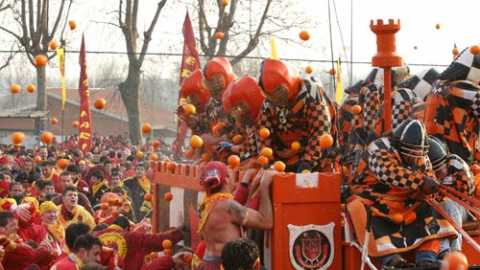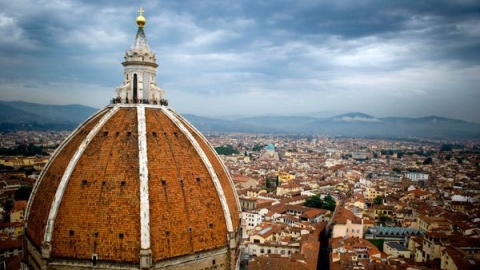Unlike most other churches in Italy, San Vitale has a humble, discreet, unpretentious exterior, befitting the most basic purpose of a church: to be a house of God, a welcoming place for the faithful. But it is within this simple and unadorned interior that lies one of the most splendid examples of early Byzantine art and architecture in Europe.

Basilica of San Vitale
Like many buildings built in Late Antiquity, San Vitale is known for the richness of the mosaics that decorate its interior. The mosaics are divided into wall mosaics and floor mosaics. The central area is surrounded by two superimposed altar aisles. A series of mosaics in the small semicircular doorways at the top of the balcony depict Old Testament sacrifices: the story of Abraham and Melchizedek, the offering of Isaac, the stories of Moses and the burning bush, Jeremiah and Isaiah, representatives of the 12 tribes of Israel, the story of Abel and Cain... are presented in an extremely delicate, meticulous and complex way with strokes of light turquoise, dark green and golden yellow.
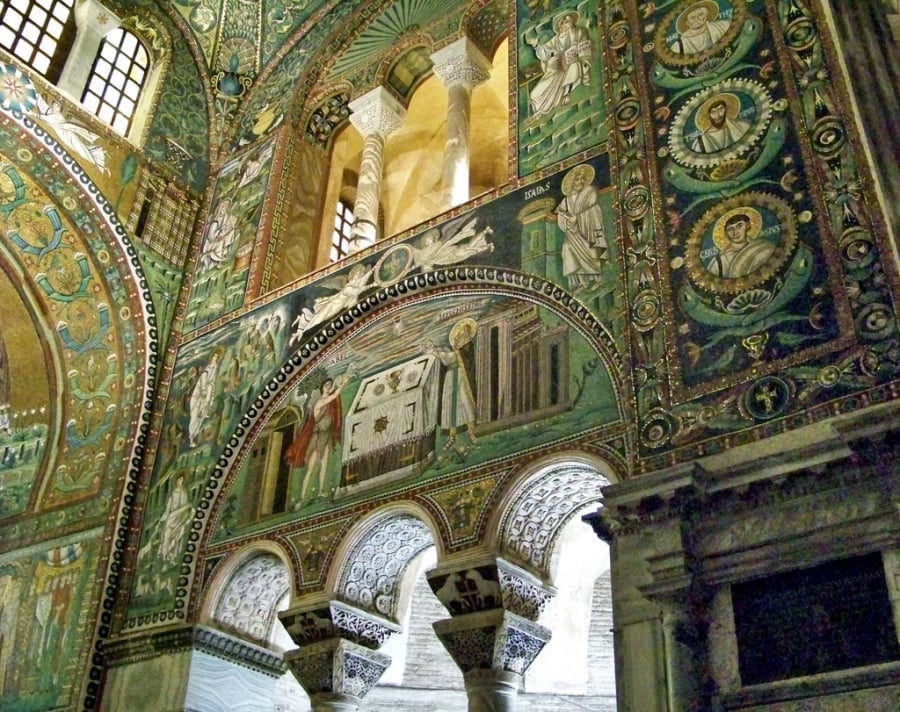
The central dome uses a Western technique of using hollow tubes inserted into each other rather than bricks. The surrounding walkways and corridors were not vaulted until later in the Middle Ages.
At the top of each of these semicircular windows is a pair of angels, holding a medallion with a cross. On the wall at the corners, next to the window bars, there is a mosaic depicting the Four Gospel Saints dressed in white, standing under their symbols (angel, lion, bull and eagle). The lion in particular is noteworthy for its ferocity.
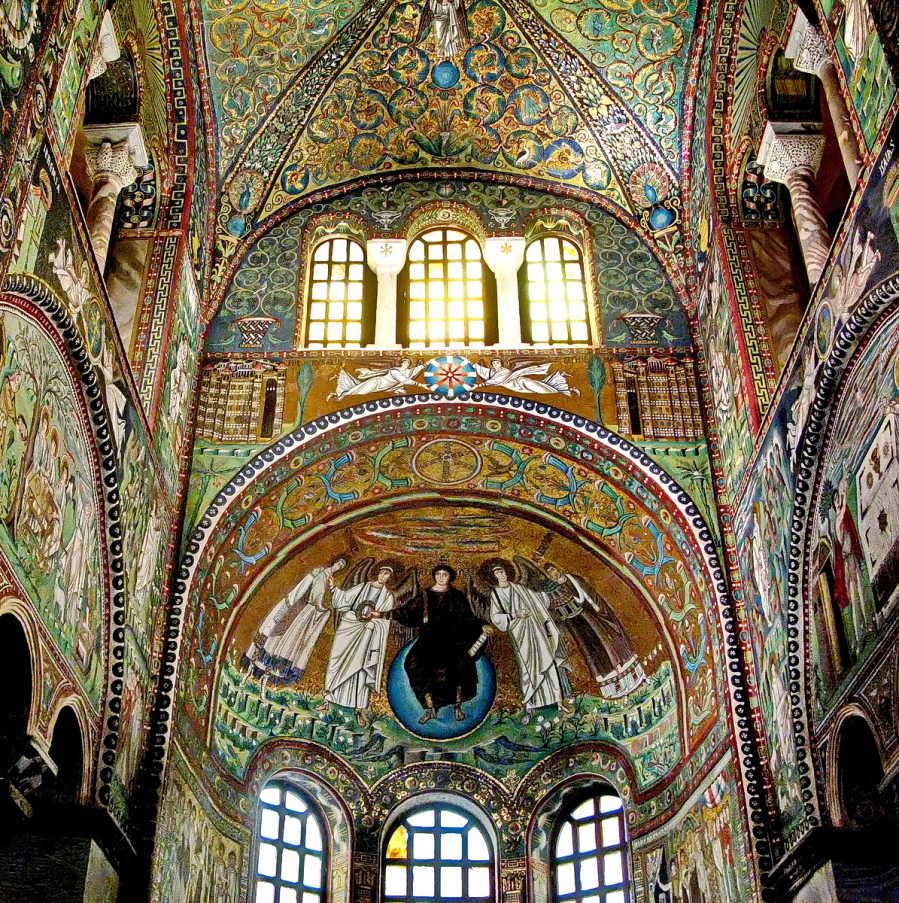
The Baroque frescoes on the dome were painted between 1778 and 1782 by the artists S. Barozzi, U. Gandolfi and E. Guarana.
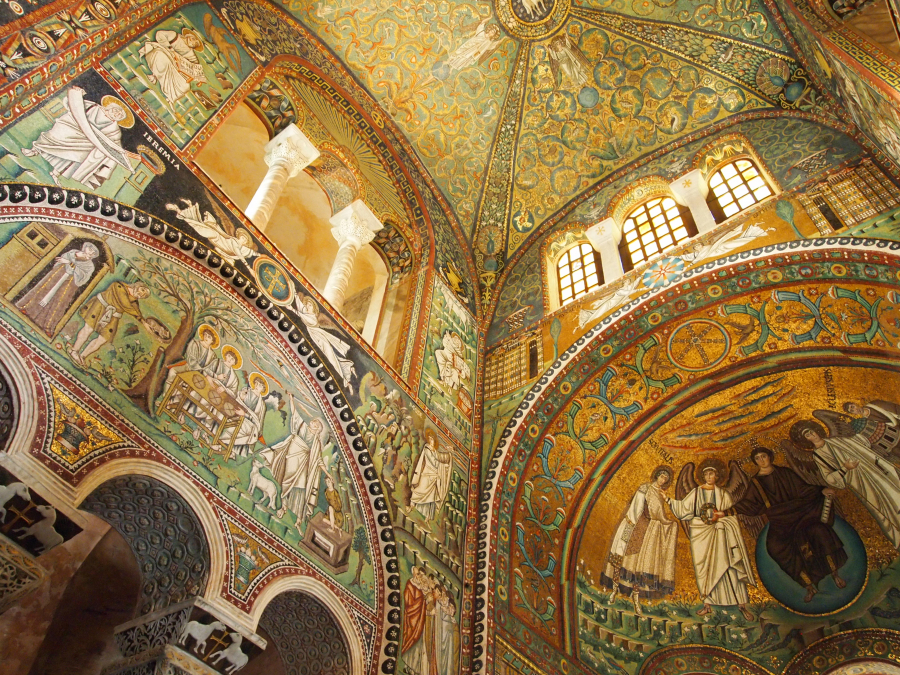
The stories illustrated on the walls and ceiling of San Vitale represent Christian ideology and beliefs during the Justinian period. The subtle combination of Eastern and Western aesthetics over 1,500 years also contributes to the unique architecture of the church.
The Basilica of San Vitale was built in Ravenna in 526 when Ravenna was still under Ostrogothic rule and completed in 547 before the Byzantine See of Ravenna was established.
The octagonal structure is a combination of Romanesque elements, including domes, arches, and stepped towers; and Byzantine elements, such as polygonal altarpieces and early buttresses. San Vitale is of great importance in Byzantine art, as it is the only major church from the time of Emperor Justinian I to survive largely intact. Furthermore, it is said to reflect the design of the audience chamber in the Byzantine Imperial Palace, of which nothing survives today.

According to legend, the church was erected on the site of Saint Vitalis' martyrdom.
The Roman Catholic Church designated this church a "Basilica" on October 7, 1960. This is a special title of honor given by the Pope to some churches or holy sites due to their antiquity, historical importance and spiritual significance to the Church, although it does not have the architectural shape of a basilica as usual, which is a cruciform plan but an octagon. It is one of eight buildings in Ravenna listed as a UNESCO World Heritage Site.
more information
Opening hours:
- Winter: Open daily from 10am - 5pm
- Rest of the year: Open daily 9am - 7pm
- Sunday: No guided tours accepted from 10am - 12pm for Mass celebrations
- No visitors accepted 15 minutes before closing time
Closing date:December 25 and December 31 every year
Entrance fee:
- Ticket: 9.50 EUR
- Students can buy discounted tickets for: 8.50 EUR
The ticket is valid for 7 consecutive days from the date of issue and allows 1 person to enter once, the attractions include the Basilica of Sant'Apollinare Nuovo, Neonia Baptistery, Basilica of San Vitale, Mausoleum of Galla Placidia, Archiepiscopal Museum and Chapel.
- Free: Children over 10 years old, Ravenna citizens (with valid documents), people with a disability certificate of over 74%, religious, soldiers, tour guides at work. Journalists must send a letter requesting free admission to Opera di Religione atinfo@ravennamosaici.it


























